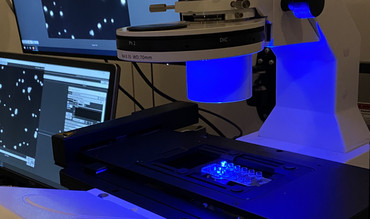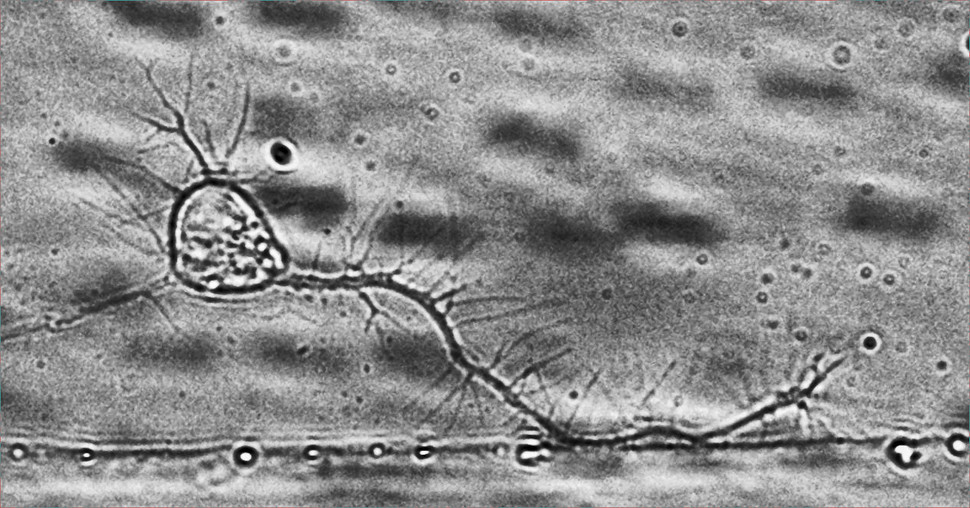The effect of mechanical stress on retinal ganglion cell axon morphology and function
Department of Ophthalmology
Background
The neuron population primarily affected by glaucoma is called retinal ganglion cells (RGC). Their axons join together to form the optic nerve. The pathogenetic chain of events leading to RGC degeneration is not fully understood, but a number of pathological conditions have been described. Among them mechanical stress to the RGC axon at the level of the lamina cribrosa, the exit site of the axons from the eye, is considered a key event. Another factor considered an early driver of RGC degeneration is the breakdown of the axonal transport, which in turn causes an interruption of pro-survival neurotrophic signaling.
Our research


Based on a primary culture model of rat retinal cells we have been developing a broad spectrum of methods to study the impact of mechanical stress on core aspects of cellular morphology, such as cytoskeleton integrity as well as functional aspects, such as calcium homeostasis, mitochondrial imaging and axonal transport. A thematic side strand of this project is the investigation of the role of mechanical guiding cues, such as topographic structures and microfluidics on RGC neurite outgrowth. We are thus seeking insights into the mechanisms of neurite (axon) guiding which might be relevant for future cell replacement strategies to treat advanced stages of glaucoma.
The implementation of hydrogel culture substrates provides a more natural underground for RGC, which enhances neurite outgrowth and allows the design of a specific surface topography, such as channels to achieve directed neurite outgrowth.
Live cell imaging is a core technology for us to study cellular functions, such as calcium influx, mitochondrial function and distribution in real time. It is also applied to assess the RGC’s response to mechanical stress applied by minimal fluid streams, called microfluidics.
We are currently adding atomic force microscopy to our setup, which shall enable us to apply well controlled mechanical stress to single neurites.


Kontaktinformationen
- E-Mail-Adresse: augenklinik(at)med.uni-goettingen.de
Schwerpunkte: Glaukom, Hornhaut-/Bindehauterkrankungen, okuläre Tumore, okuloplastische Chirurgie, Katarakte